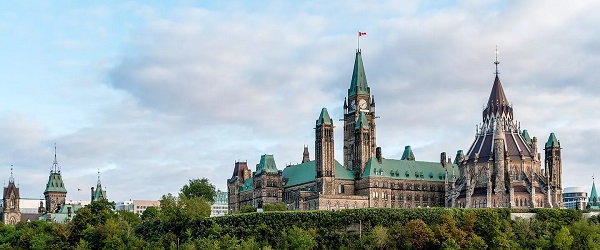Fraser Institute
Other countries with universal health care don’t have Canada’s long wait times

From the Fraser Institute
By Mackenzie Moir and Bacchus Barua
Unfortunately it’s now very common to see stories about how long provincial wait times for medical care are driving patients to seek care elsewhere, often at great personal cost. Take the recent case of the Milburns in Manitoba who, after waiting years for a knee surgery, are now considering selling their home and moving to Alberta just to get on a potentially shorter public wait list.
Patients in Manitoba could expect to wait a median of 29 weeks to see an orthopedic specialist after a referral from a family physician, then they still faced a median 24.4 week wait to get treatment. In other words, the total typical wait for orthopedic surgery in the province is more than one year at 53.4 weeks. Remember, that’s a median measure, which means some patients wait much longer.
Unfortunately, the Milburns are unlikely to get more timely care on the public wait list in Alberta. At 64.1 weeks, the total median wait for orthopedic care in Alberta was actually longer than in Manitoba. And this doesn’t include the time it takes for provincial coverage to activate for a new provincial resident, or the time it will take to find a new family doctor and get the necessary tests, scans and referrals.
To get more timely care, the Milburns are left with unenviable options. Because they’re insured by Manitoba’s public health-care plan, paying for covered care out of pocket is restricted. They can, however, pay for and receive care privately in other provinces as uninsured visitors (i.e. not move there permanently). Specifically, certain provinces have “exemptions” that allow physicians to charge out-of-province patients directly to provide these procedures privately.
Alternatively, the Milburns could leave Canada and travel even further from home to receive timely care abroad.
But it doesn’t have to be this way.
Long wait times are not the necessary price Canadians must pay for universal coverage. In fact, Canada is one of 30 high-income countries with universal health care. Other countries such as Switzerland, the Netherlands, Germany and Australia have much shorter wait times. For example, only 62 per cent of Canadians reported access to non-emergency surgery in less than four months in 2020 compared to 99 per cent of Germans, 94 per cent of Swiss and 72 per cent of Australians.
The difference? These countries approach health care in a fundamentally different way than us. One notable difference is their attitude towards the private sector.
In Germany, patients can seek private care while still insured by the public system or can opt out and purchase regulated private coverage. These approaches (universal, privately paid or privately insured) are able to deliver rapid access to care. The Swiss simply mandate that patients purchase private insurance in a regulated-but-competitive marketplace as part of their universal scheme. Lower-income families receive a subsidy so they can participate on a more equal footing in the competitive marketplace to obtain the insurance that best fits their needs.
Perhaps the most direct comparator to Canada is Australia—not just geographically, but because it also primarily relies on a tax-funded universal health-care system. However, unlike Canada, individuals can purchase private insurance to cover (among other things) care received as a private patient in a public or private hospital, or simply pay for their private care directly if they choose. In 2021/22 more than two-thirds (70 per cent) of non-emergency admissions to a hospital involving surgery (both publicly and privately funded) took place in a private facility.
Of course, these faster-access countries share other differences in attitudes to universal health-care policy including requirements to share the cost of care for patients and funding hospitals on the basis of activity (instead of Canada’s outdated bureaucratically-determined budgets). A crucial difference, however, is that patients are not generally prevented from paying privately for health care in their home province (or canton or state) in any of these countries.
Without fundamental reform, and as provincial systems continue to struggle to provide basic non-emergency care, we’ll continue to see more stories like the Milburn’s. Without reform, many Canadians will continue to be forced to make similarly absurd decisions to get the care they need, rather than focusing on treatment and recovery.
Authors:
Business
Massive government child-care plan wreaking havoc across Ontario

From the Fraser Institute
By Matthew Lau
It’s now more than four years since the federal Liberal government pledged $30 billion in spending over five years for $10-per-day national child care, and more than three years since Ontario’s Progressive Conservative government signed a $13.2 billion deal with the federal government to deliver this child-care plan.
Not surprisingly, with massive government funding came massive government control. While demand for child care has increased due to the government subsidies and lower out-of-pocket costs for parents, the plan significantly restricts how child-care centres operate (including what items participating centres may purchase), and crucially, caps the proportion of government funds available to private for-profit providers.
What have families and taxpayers got for this enormous government effort? Widespread child-care shortages across Ontario.
For example, according to the City of Ottawa, the number of children (aged 0 to 5 years) on child-care waitlists has ballooned by more than 300 per cent since 2019, there are significant disparities in affordable child-care access “with nearly half of neighbourhoods underserved, and limited access in suburban and rural areas,” and families face “significantly higher” costs for before-and-after-school care for school-age children.
In addition, Ottawa families find the system “complex and difficult to navigate” and “fewer child care options exist for children with special needs.” And while 42 per cent of surveyed parents need flexible child care (weekends, evenings, part-time care), only one per cent of child-care centres offer these flexible options. These are clearly not encouraging statistics, and show that a government-knows-best approach does not properly anticipate the diverse needs of diverse families.
Moreover, according to the Peel Region’s 2025 pre-budget submission to the federal government (essentially, a list of asks and recommendations), it “has maximized its for-profit allocation, leaving 1,460 for-profit spaces on a waitlist.” In other words, families can’t access $10-per-day child care—the central promise of the plan—because the government has capped the number of for-profit centres.
Similarly, according to Halton Region’s pre-budget submission to the provincial government, “no additional families can be supported with affordable child care” because, under current provincial rules, government funding can only be used to reduce child-care fees for families already in the program.
And according to a March 2025 Oxford County report, the municipality is experiencing a shortage of child-care staff and access challenges for low-income families and children with special needs. The report includes a grim bureaucratic predication that “provincial expansion targets do not reflect anticipated child care demand.”
Child-care access is also a problem provincewide. In Stratford, which has a population of roughly 33,000, the municipal government reports that more than 1,000 children are on a child-care waitlist. Similarly in Port Colborne (population 20,000), the city’s chief administrative officer told city council in April 2025 there were almost 500 children on daycare waitlists at the beginning of the school term. As of the end of last year, Guelph and Wellington County reportedly had a total of 2,569 full-day child-care spaces for children up to age four, versus a waitlist of 4,559 children—in other words, nearly two times as many children on a waitlist compared to the number of child-care spaces.
More examples. In Prince Edward County, population around 26,000, there are more than 400 children waitlisted for licensed daycare. In Kawartha Lakes and Haliburton County, the child-care waitlist is about 1,500 children long and the average wait time is four years. And in St. Mary’s, there are more than 600 children waitlisted for child care, but in recent years town staff have only been able to move 25 to 30 children off the wait list annually.
The numbers speak for themselves. Massive government spending and control over child care has created havoc for Ontario families and made child-care access worse. This cannot be a surprise. Quebec’s child-care system has been largely government controlled for decades, with poor results. Why would Ontario be any different? And how long will Premier Ford allow this debacle to continue before he asks the new prime minister to rethink the child-care policy of his predecessor?
Banks
Scrapping net-zero commitments step in right direction for Canadian Pension Plan

From the Fraser Institute
By Matthew Lau
And in January, all of Canada’s six largest banks quit the Net-Zero Banking Alliance, an alliance formerly led by Mark Carney (before he resigned to run for leadership of the Liberal Party) that aimed to align banking activities with net-zero emissions by 2050.
The Canada Pension Plan Investment Board (CPPIB) has cancelled its commitment, established just three years ago, to transition to net-zero emissions by 2050. According to the CPPIB, “Forcing alignment with rigid milestones could lead to investment decisions that are misaligned with our investment strategy.”
This latest development is good news. The CPPIB, which invest the funds Canadians contribute to the Canada Pension Plan (CPP), has a fiduciary duty to Canadians who are forced to pay into the CPP and who rely on it for retirement income. The CPPIB’s objective should not be climate activism or other environmental or social concerns, but risk-adjusted financial returns. And as noted in a broad literature review by Steven Globerman, senior fellow at the Fraser Institute, there’s a lack of consistent evidence that pursuing ESG (environmental, social and governance) objectives helps improve financial returns.
Indeed, as economist John Cochrane pointed out, it’s logically impossible for ESG investing to achieve social or environmental goals while also improving financial returns. That’s because investors push for these goals by supplying firms aligned with these goals with cheaper capital. But cheaper capital for the firm is equivalent to lower returns for the investor. Therefore, “if you don’t lose money on ESG investing, ESG investing doesn’t work,” Cochrane explained. “Take your pick.”
The CPPIB is not alone among financial institutions abandoning environmental objectives in recent months. In April, Canada’s largest company by market capitalization, RBC, announced it will cancel its sustainable finance targets and reduce its environmental disclosures due to new federal rules around how companies make claims about their environmental performance.
And in January, all of Canada’s six largest banks quit the Net-Zero Banking Alliance, an alliance formerly led by Mark Carney (before he resigned to run for leadership of the Liberal Party) that aimed to align banking activities with net-zero emissions by 2050. Shortly before Canada’s six largest banks quit the initiative, the six largest U.S. banks did the same.
There’s a second potential benefit to the CPPIB cancelling its net-zero commitment. Now, perhaps with the net-zero objective out of the way, the CPPIB can rein in some of the administrative and management expenses associated with pursuing net-zero.
As Andrew Coyne noted in a recent commentary, the CPPIB has become bloated in the past two decades. Before 2006, the CPP invested passively, which meant it invested Canadians’ money in a way that tracked market indexes. But since switching to active investing, which includes picking stocks and other strategies, the CPPIB ballooned from 150 employees and total costs of $118 million to more than 2,100 employees and total expenses (before taxes and financing) of more than $6 billion.
This administrative ballooning took place well before the rise of environmentally-themed investing or the CPPIB’s announcement of net-zero targets, but the net-zero targets didn’t help. And as Coyne noted, the CPPIB’s active investment strategy in general has not improved financial returns either.
On the contrary, since switching to active investing the CPPIB has underperformed the index to a cumulative tune of about $70 billion, or nearly one-tenth of its current fund size. “The fund’s managers,” Coyne concluded, “have spent nearly two decades and a total of $53-billion trying to beat the market, only to produce a fund that is nearly 10-per-cent smaller than it would be had they just heaved darts at the listings.”
Scrapping net-zero commitments won’t turn that awful track record around overnight. But it’s finally a step in the right direction.
-
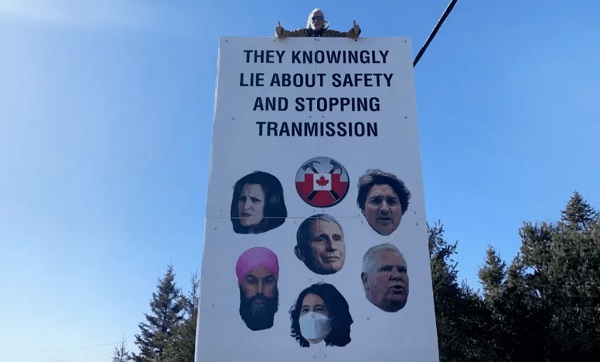
 COVID-198 hours ago
COVID-198 hours agoOntario man launches new challenge against province’s latest attempt to ban free expression on roadside billboards
-

 Energy16 hours ago
Energy16 hours agoThis Canada Day, Celebrate Energy Renewal
-
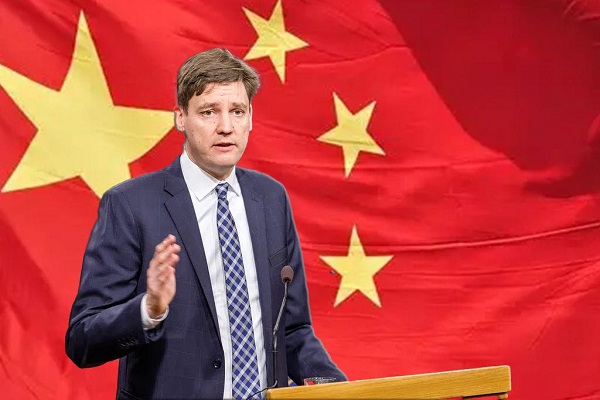
 Business1 day ago
Business1 day agoWhile China Hacks Canada, B.C. Sends Them a Billion-Dollar Ship Building Contract
-
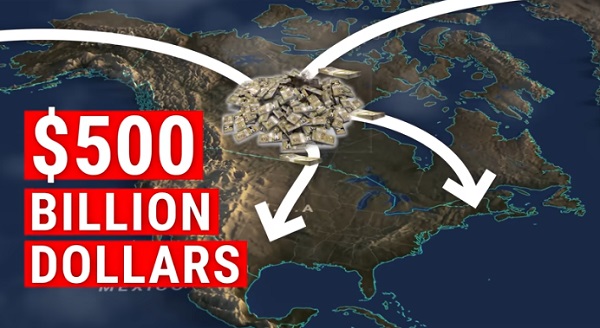
 Alberta1 day ago
Alberta1 day agoSo Alberta, what’s next?
-

 Alberta7 hours ago
Alberta7 hours agoAlberta Next Takes A Look At Alberta Provincial Police Force
-

 Bjorn Lomborg1 day ago
Bjorn Lomborg1 day agoThe Physics Behind The Spanish Blackout
-
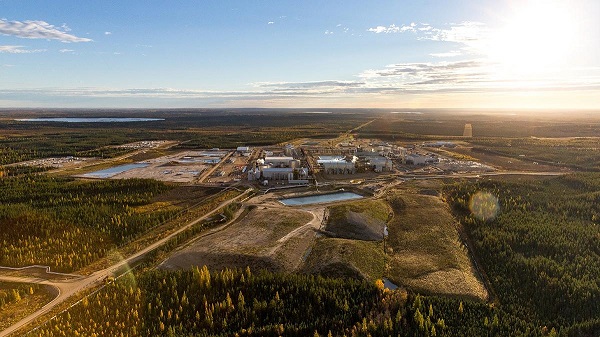
 Alberta9 hours ago
Alberta9 hours agoCanadian Oil Sands Production Expected to Reach All-time Highs this Year Despite Lower Oil Prices
-
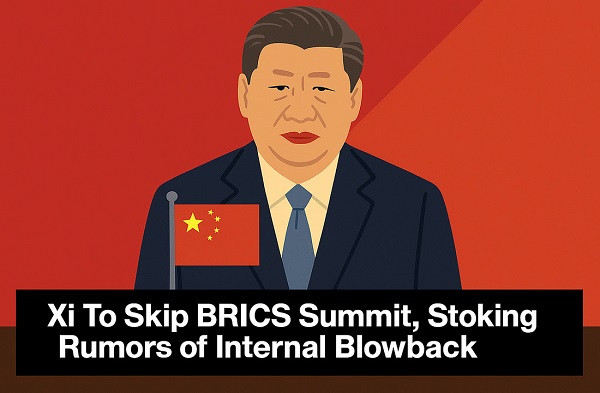
 International10 hours ago
International10 hours agoPresident Xi Skips Key Summit, Adding Fuel to Ebbing Power Theories






